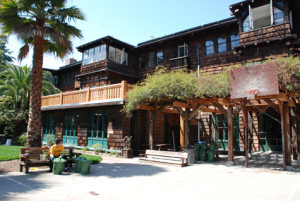Before Burlingtonians succumb to the blandishments of “purpose-built” student-housing developers, they might do well to consider an alternative with a long tradition of affordability: student co-op housing.
Student housing co-ops are scattered around the country. Perhaps the best known is the Berkeley Student Cooperative, which dates from 1933 and offers housing to about 1,300 students in 20 properties.  According to the co-op’s website, monthly rent is about $745 in a room and board house (compared to $1,354 in a university dorm triple) and $433 to $881 a month for single room in an apartment. (By comparison, the market rate for a one-bedroom apartment is typically over $2,000.) No wonder there are 1,000 students on the waiting list.
According to the co-op’s website, monthly rent is about $745 in a room and board house (compared to $1,354 in a university dorm triple) and $433 to $881 a month for single room in an apartment. (By comparison, the market rate for a one-bedroom apartment is typically over $2,000.) No wonder there are 1,000 students on the waiting list.
And yes, some of those Berkeley co-op houses have game rooms and hot tubs.
A thumbnail case for student co-ops can be found here, on the website of the North American Students of Cooperation (NASCO). Housing co-ops operate on variations of a shared-equity model. Here’s NASCO’s description of a common form:
“In a ‘Market Equity’ coop, a member joins the coop, buys a share, and lives in a unit. This is similar to something like a condo complex, but instead of owning one condo, you own a share in the whole complex. When you decide to leave the coop, you can sell your share at whatever the market will pay for it.”
Housing co-ops also come with shared governance, work expectations, and so on. They’re not limited to students, of course. Champlain Housing Trust has five co-ops with 81 apartment units in Burlington, with another one on the way on Bright Street.
You’ll never be faced with this choice, but it never hurts to ask: Which would you rather see on the northeast corner of North Winooski Avenue and Main Street: purpose-built student housing, with a climbing wall, or a student housing co-op without one?

